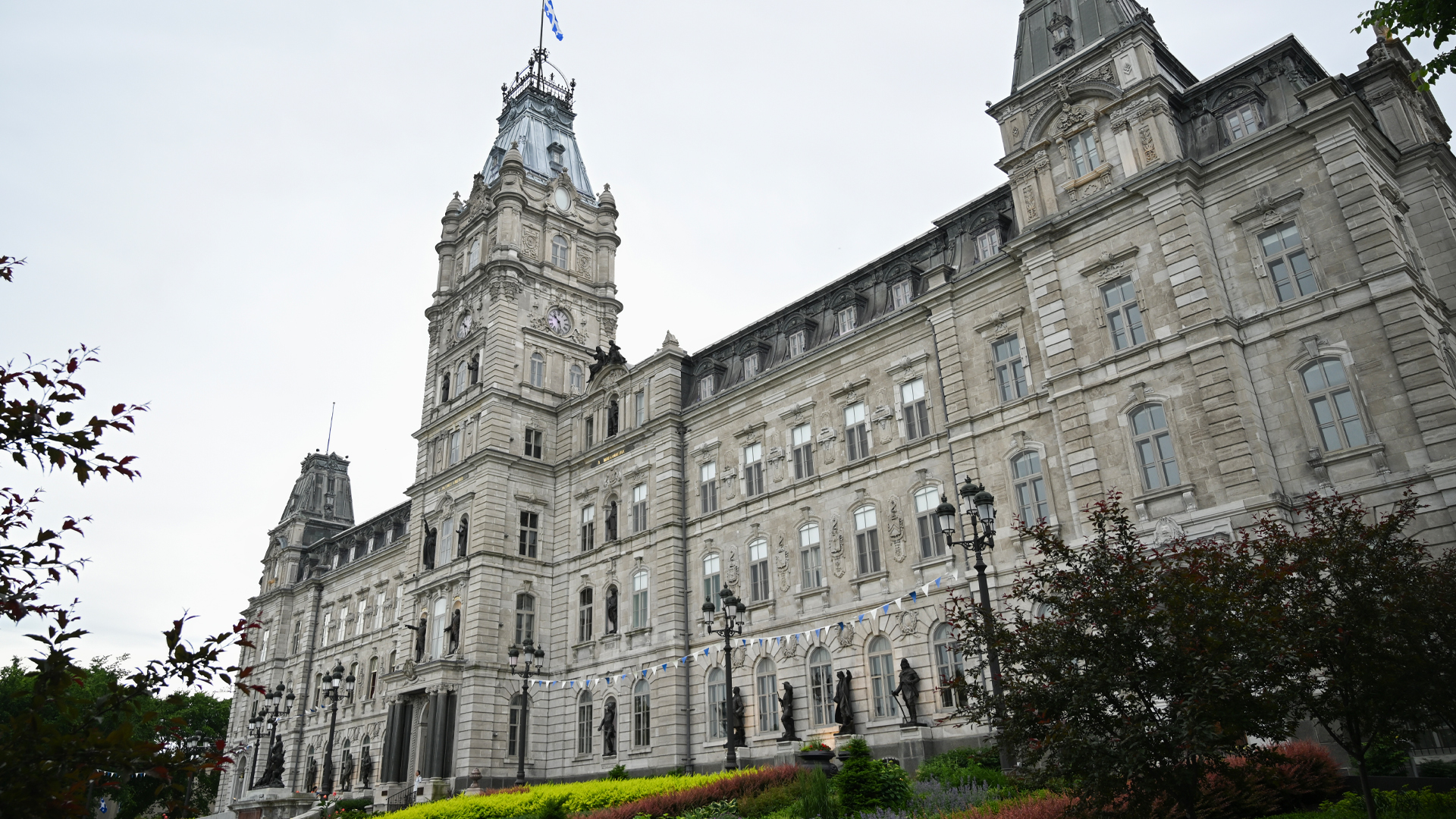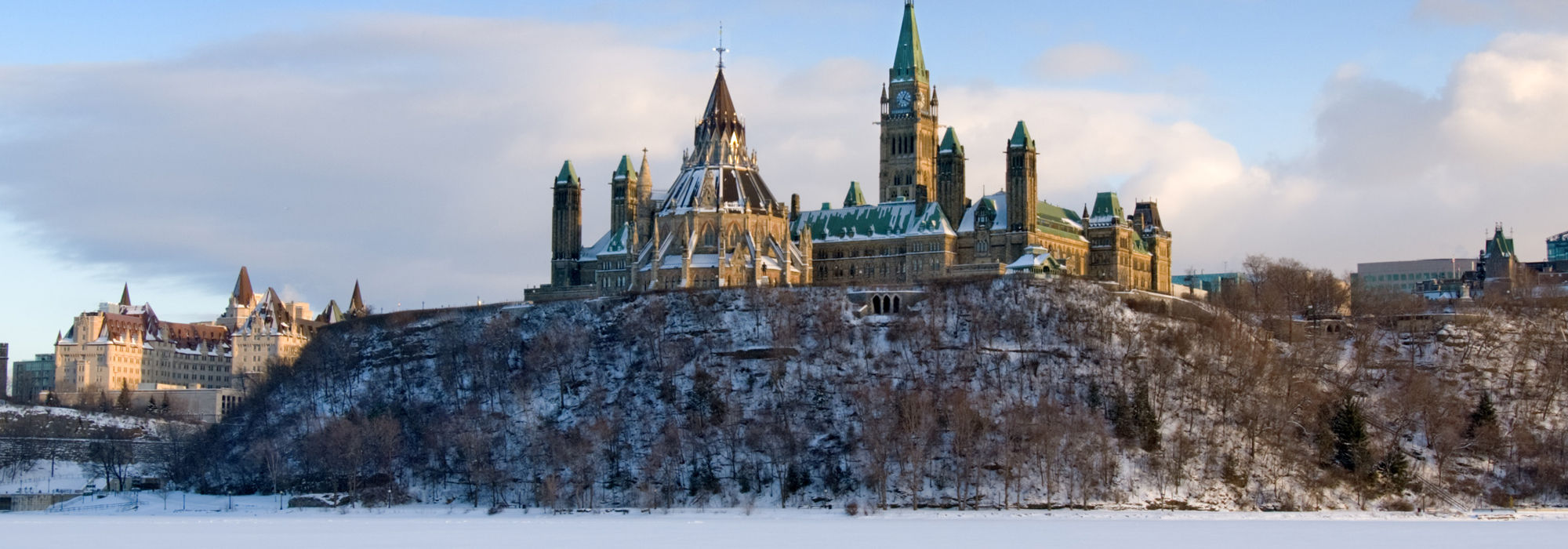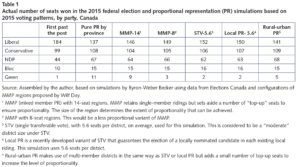
Although electoral reform continues to be a live issue in Canada at both the federal and provincial levels (notably in British Columbia, Quebec and Prince Edward Island), there has been little rigorous and systematic work on what proportional representation (PR) would mean for Canada’s party system and how governments are formed. This article seeks to clarify some critical dimensions of this question, while abstracting from the sort of partisan posturing that frequently characterizes discussion of this subject.
Theory and practice
Duverger’s Law, cited in a recent Policy Options article by Richard Johnston, offers important clues about how first-past-the-post (FPTP) differs from PR. Duverger’s Law predicts that FPTP favours the perpetuation of two major parties. This happens because there can be only one winner in each riding. As a result, voters wishing to avoid wasting their votes tend to abandon a party with little chance of winning, and parties that have similar ideologies feel compelled to merge to avoid splitting the vote.
This is clearly how it works federally and provincially in Canada but, as always, the reality on the ground is more complex than the theory predicts. Third parties do manage to get a foothold and sometimes survive, and most FPTP countries have more than two parties.
Also important in Canada is the regional dimension of party representation. When new parties emerge, they tend to be regionally based. Examples are the Progressive and United Farmers parties, centred on the Prairie provinces in the 1920s; Social Credit in Alberta (1935 to 1957); the Ralliement créditiste in Quebec (1962 to 1979); and, more recently, Reform and the Canadian Alliance in the western provinces (1993 to 2000) and the Bloc Québécois in Quebec (1993 to the present).
There is also a pervasive tendency for one of the two main parties to sweep the bulk of the seats in certain regions, leaving those regions with one-party rather than two-party or multi-party representation, and dividing the country along regional lines. Former Liberal Party leader Stéphane Dion argued that the key reason we need PR in Canada is that it would solve this problem.
PR systems are designed to give all parties a better chance of winning seats in proportion to their share of the popular vote. However, the number of small parties likely to win seats depends on the features of each system. At one extreme is the Netherlands, which uses a national list system with virtually no restrictions, and whose 150-member House of Representatives includes members from 13 parties, 4 of which are represented in government. This stands in contrast with Germany, whose 709-member Bundestag includes members of only 6 parties, due to limits that make parties ineligible for list seats unless they get at least 5 percent of the popular vote.
New Zealand provides an interesting example of what can happen to electoral results when a country transitions from FPTP to PR. Following two electoral reform referendums in 1992 and 1993, New Zealand changed its electoral system from FPTP to a mixed member proportional (MMP) system, beginning with the 1996 national election. New Zealand had been strongly dominated by two parties, National and Labour, under FPTP in the years preceding this reform, and at no time from 1943 to 1993 did independents or third parties ever win more than four seats in a national election. This changed significantly following the introduction of MMP. National and Labour have continued to form government under MMP, but these parties can no longer govern on their own. Indeed, other parties have won a sizable share of the seats in every election since 1996, anywhere from 15 percent in the 2017 election to 32 percent in 1996. All governments since 1996 have therefore been minority or coalition governments. New Zealand’s current government is based on a mixed coalition/minority arrangement involving the Labour Party, New Zealand First and the Green Party.
The citizens’ case for PR
A fundamental feature of our FPTP system is that the winning party can form a “false majority” government without having achieved a majority of the popular vote. Majorities based on the popular vote are actually quite rare, and the last one federally was in 1984 under Brian Mulroney, whose party gained just 50.03 percent of the vote. By tying the number of seats of each party more closely to its share of the popular vote, PR would make it more difficult to elect majority governments formed by a single party.
That politicians and political parties accustomed to unfettered rule might prefer to avoid sharing power with other parties is understandable. However, the MyDemocracy.ca survey conducted by the government in December 2016 and January 2017 revealed that voters don’t share the same perspective. The survey showed that there is an extraordinary level of support for power-sharing arrangements. Asked about this in several ways, Canadians came back again and again to the same general conclusion:
- 62 percent agreed that governments should have to negotiate with other parties, even if it is less clear who is accountable for policy decisions; only 24 percent disagreed.
- 70 percent felt that several parties should have to agree before a decision is made.
- 62 percent agreed that it is better for several parties to have to govern together, even if it takes longer to get things done; only 29 percent disagreed.
- 68 percent agreed that a party that wins the most seats should still have to compromise with other parties; only 19 percent disagreed.
There are questions to be asked as well about voter choice. It is hard to imagine why voters would ever want only two parties to choose from, as this would seem a risky proposition. Need we be reminded of the miserable political situation that the US currently finds itself in, with only two parties, for all practical purposes? Voters’ opposition to the dominance of only two parties is probably another reason why new parties persistently emerge and sometimes survive, in spite of Duverger’s Law.
The argument for voter choice has not always received the attention it deserves, but it was persuasively made in 1996-97 by Stephen Harper and Tom Flanagan. They argued at the time that “Canada’s system of one-party-plus rule has stunted democracy” and noted how the conservative movement had divided into multiple parties, including the Progressive Conservative Party, the Reform Party and the Bloc Québécois. They considered this to be a good thing, because it allowed conservative voters with varying views to express their preferences. They called for a PR electoral system that included this kind of voter choice. Political realities changed for conservatives following the merger of the Canadian Alliance and the Progressive Conservatives in 2003, but the basic ideas about voter choice remain as compelling today as before. If PR made sense for Conservatives before the merger, it is fair to assume that the conservative movement would find a way to make sense of it again if PR were implemented in Canada.
Looking forward
So how would Canada’s party system evolve if PR were implemented?
A review of the results from the 2015 election provides one way to address this question. Table 1 shows the actual and some projected results under a range of PR simulations I developed. (You can see a more detailed spreadsheet of these simulations here.)
The table considers five possible regional PR configurations:
- two versions of MMP;
- two variants of STV; and
- rural-urban PR, which combines features of the above.
The column “Pure PR by province” shows what the result of the election would have been based on each party’s share of the popular vote in each province. Comparing this with the actual result as shown in the “FPTP” column allows us to appreciate the “winner’s bonus” enjoyed by the Liberal Party. Under FPTP, the Liberals won 184 seats. A pure version of PR by province would have given them only 137 seats. Eliminating the winner’s bonus would have resulted in gains for each of the other parties, notably for the NDP (23 more seats) and the Green Party (10 more seats).
Even a pure PR system would have to be organized by province, for constitutional reasons, but most proposals for PR in Canada recommend a regionally based system of proportionality, covering whole provinces in the small provinces and manageably sized regions in the larger ones. This would maintain the geographical connection between representatives and the electorate while ensuring that regions are represented by a diversity of political parties.
None of the models shown in table 1 are perfectly proportional, but all would significantly reduce the winner’s bonus, making it much more difficult to form false majority governments of the kind we routinely have under FPTP.
Notable across the options shown in the table is the smaller number of seats going to the Green Party in some cases (as few as two seats compared with nine under MMP-14). This is due to the smaller size of the PR region in these models, since it is hard for small parties to win seats in small regions. A solution could be to increase the size of districts in urban areas under STV or local PR to help level the playing field. However, the simulations in the table are based on 2015 FPTP voting patterns. Under PR, voters would no longer feel compelled to vote strategically for the major parties, and one would expect smaller parties like the Green Party to win a greater share of the vote.
Compared with the FPTP results from 2015, a PR system would have provided a more accurate representation of parties and citizens along regional lines. Liberal voters would have elected more MPs in Alberta, Saskatchewan and rural areas in much of the country. The Conservatives, the NDP and the Greens would have won more seats in the eastern half of the country, most markedly in Atlantic Canada and Toronto, which elected only Liberals in 2015.
None of the PR options in the table would have given one party the 170 seats required to form a majority government, and the overall result would no doubt have been a minority or coalition Liberal government supported by the NDP and possibly the Green Party.
According to this scenario, PR would seem to offer rather dim short-term prospects for the Conservative Party of Canada. However, we don’t know how fast and in what ways the existing party structure on the right side of the spectrum would react. To win power again, the Conservatives would have to retake the centre, and they might find that difficult under the current big-tent arrangement. The alternative under a PR system would be the emergence or rebirth of one or more other parties on the right. The most likely scenario would be the rebirth of the Progressive Conservative Party, or something like it, as a way of drawing votes from other centrist parties. This would fulfill the scenario envisaged by Harper and Flanagan in 1996-97 of giving voters a greater range of conservative options to choose from.
Depending on the PR system chosen, independents might also win a number of seats, as they have done in Ireland since 2002 using STV.
Greater choice of parties from the right and of independent candidates would open up a full range of coalition or minority government possibilities. Although the most likely scenario in the short term might involve arrangements with the Liberal Party and some combination of the NDP and/or Green Party, one could expect that political forces on the right and centre-right side of the political spectrum would adapt and that other viable coalition arrangements would quickly emerge following the adoption of a PR system.
Photo: Shutterstock, by Howard Sandler.
Do you have something to say about the article you just read? Be part of the Policy Options discussion, and send in your own submission. Here is a link on how to do it. | Souhaitez-vous réagir à cet article ? Joignez-vous aux débats d’Options politiques et soumettez-nous votre texte en suivant ces directives.









